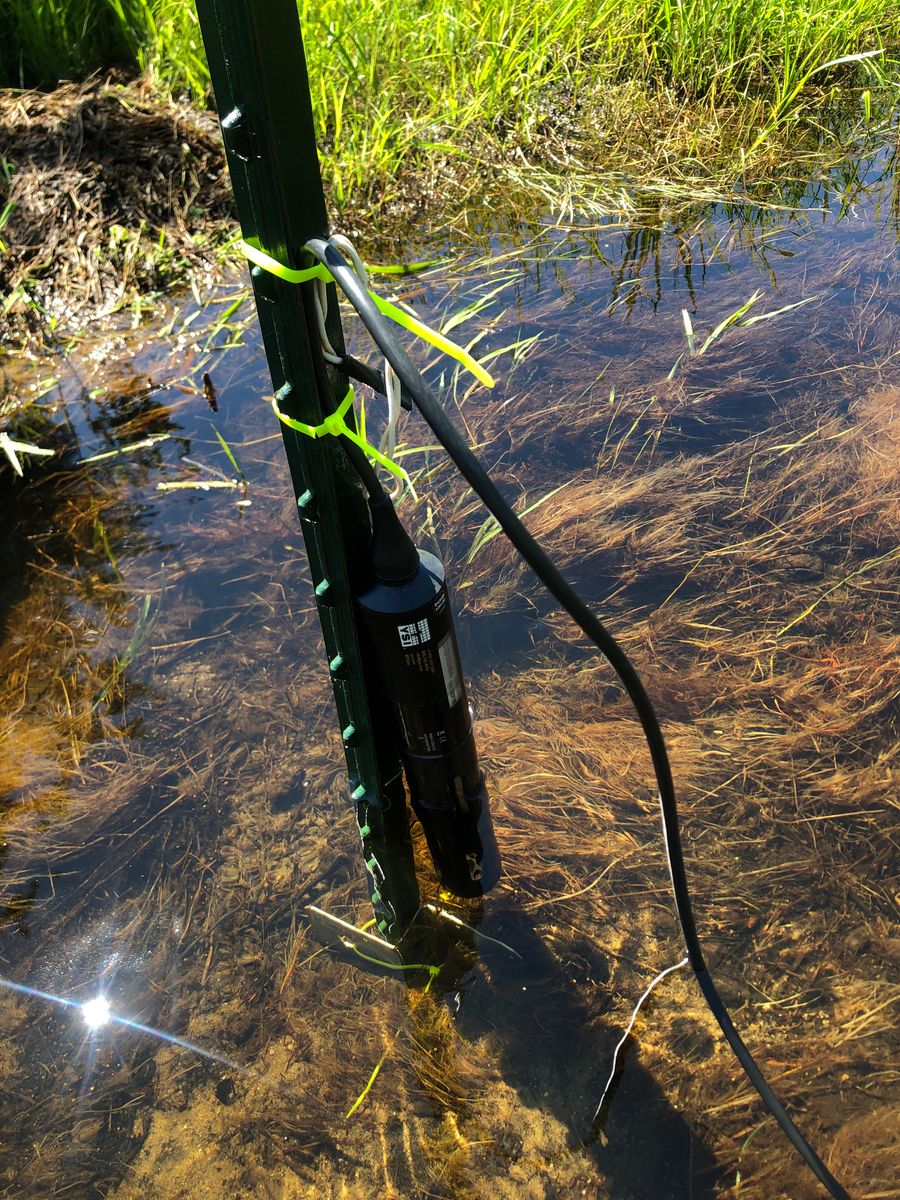Quantifying Nutrient Transport and Transformation in Stream Channels Associated with Active, Retired, and Restored Cranberry Farms
Scientists Measure Flow in Streams Associated with Cranberry Farms and Constructed Wetlands
Regular flow measurements are completed by scientists, postdoctoral research associates, and research technicians from the United States Department of Agriculture's Agricultural Research Service and the University of Massachusetts Cranberry Research Station in streams associated with active cranberry farms, retired cranberry farms, and former cranberry farms that have been converted to wetland systems.
A technique called dilution gauging is employed to measure flow. This procedure entails installing conductivity sensors in each stream at specific locations. Conductivity refers to the ability of water to conduct an electric current and is often used to measure chloride from salt in aquatic environments.
A sensor is installed at Manomet Brook to log continuous conductivity measurements.
Sensors are mounted on posts and hang above the streambed.
Once the sensors have been installed in the stream, a solution is created using a small amount of pre-measured salt and stream water. The solution is stirred to ensure all the salt dissolves. The solution is then poured into the stream at a pre-determined location and the time the solution is released is recorded. As the salt solution travels downstream, the sensors record increases in conductivity.
Physical science field technician Julian Draz and postdoctoral researcher Molly Welsh pour a salt solution into a research stream. Photo courtesy of: Casey Kennedy.
Once all the salt has been flushed from the stream, the conductivity returns to background levels. The sensors are then retrieved and data are downloaded.
Julian retrieves a sensor at Eel River.
These data are used to calculate stream velocity and flow. Velocity, or how fast the stream is moving, is determined via reviewing the times the salt solution passed by each downstream sensor. Streamflow, or the volume of water moving through the channel over time, is determined via calculating the amount of salt detected in the stream following the release of the solution as the conductivity rises and then slowly returns to the background.
If enough flow measurements are taken across a range of conditions, including low flows in summer, intermediate flows in fall, and high flows in spring and winter, a relationship can be generated to allow scientists to estimate streamflow from water depth. The researchers aim to understand how seasonal differences in flow may influence water chemistry.
July 13, 2023




